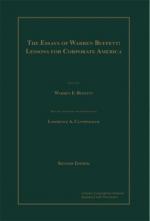
|
| Name: _________________________ | Period: ___________________ |
This quiz consists of 5 multiple choice and 5 short answer questions through Common Stock.
Multiple Choice Questions
1. What was the name of the company that Buffett and Munger bought in 1973?
(a) Washington Post.
(b) New York Times.
(c) Chicago Tribune.
(d) Florida Gazette.
2. A CEO unlikely to dispose of his successful operating business may sell profitable stock investments to redeploy _________.
(a) Capital.
(b) Interest.
(c) Nothing.
(d) Dividends.
3. Berkshire's board included a controlling ________, in which other board members could persuade others to make changes.
(a) Competitor.
(b) Owner.
(c) Outsider.
(d) Shareholder.
4. The different classes of stock allow _______ investors to still have value for the money they can spend.
(a) Large.
(b) Short-term.
(c) Long-term.
(d) Small.
5. The _______ doesn't feel poorer when the embezzler is getting richer.
(a) Government.
(b) Victim.
(c) Country.
(d) Market.
Short Answer Questions
1. Who was the financial mentor that Buffett relied upon for his teachings and lessons about the way to do business?
2. What was NOT one of the three tax-free gifting tactics that Buffett suggested to shareholders?
3. What was the name of the bank that had substantial equity interest in Berkshire?
4. Buffett and Munger promise to never ________ unless they are selling at a market price well below intrinsic business value.
5. How much profit did the new holding of Berkshire make for Buffett and Munger?
|
This section contains 216 words (approx. 1 page at 300 words per page) |

|




